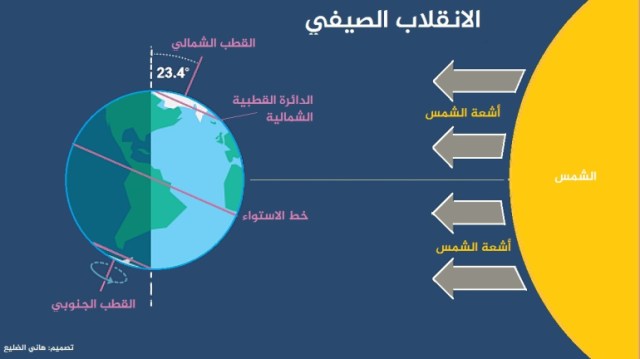On the morning of June 21, the Arab Gulf countries and some countries in the world will witness an annular solar eclipse, which is the second in a row after the annular eclipse witnessed by most of these countries on December 26, 2019.
A rare and serious event
Two consecutive eclipses of the same type, and in almost the same area in less than six months, is a rare matter that the region has not seen in more than 20 years.
The phenomenon is beautiful and breathtaking, but it is dangerous for the naked human eye that you look at without protective means such as eclipse glasses and light filter filters.
At a time when the Arab world witnessed the previous eclipse of the sun at sunrise, when the atmosphere and some clouds that were suspended in the sky shielded the eyes from the intense rays and dangerous, the sight of its sunrise was delighting for everyone who saw it in the Arab world.
The number of people who woke up to watch this event reached a few thousand gathered in places specified by the local astronomical societies for each country, as happened on the beach of Katara in the State of Qatar, where nearly a thousand women, children and school students gathered to witness this rare phenomenon.
The next eclipse ... do not miss it
If you have missed the previous eclipse due to travel or sleep, then you only have to prepare to watch this eclipse, which falls on Sunday, June 21, as the eclipse will begin shortly after sunrise.
The annular eclipse crosses south of Sanaa, one of two Arab capitals from the African continent, followed by the city of Muscat, after which the eclipse will leave for the Indian subcontinent through Pakistan and then China, where the eclipse peaks.
The eclipse percentage in the Arab world ranges between a annular eclipse covering 98.4% of the sun’s disk in Muscat, and a partial eclipse seen in the farthest Arab capital in the north, Lebanon, at 31.2%. Between this and that, you will see Arab cities as an eclipse of various proportions.
For example, the partial eclipse begins in Doha, at 7:12, and reaches its climax at 8:30 to end completely at 10:02 Mecca. This would extend the eclipse for about two hours and 50 minutes.
It is reported that this eclipse coincides with the summer solstice day, when the sun has reached its maximum height north of the equator and is preparing to return south after midnight from the same day at 00:43.
This means that summer is at the beginning of peaks for the people of the northern hemisphere, or the beginning of winter for the people of the southern hemisphere.
Safe consideration is a must
What is common in all phases of the eclipse is that light filters must be used because looking at the rising sun in the summer is not possible with the naked eye due to the absence of clouds except in rare cases.
It is advised to use glasses dedicated to the eclipse, but the lack of availability does not mean that you miss the opportunity in front of you, so you can use other optical means that reduce the sun's rays. The criterion is that the sun disk appears without rays surrounded by darkness in this filter.
And in the absence of any visual means, you only have to pierce a paper a small hole and expose it to the sunlight to see how its image falls on the ground or on the wall in the same shape in the sky, with a difference that it will be laterally inverted in order to preserve the principle of the flow of rays with straight lines laid out by a scientist Optics Muslim Hassan bin Haitham.

